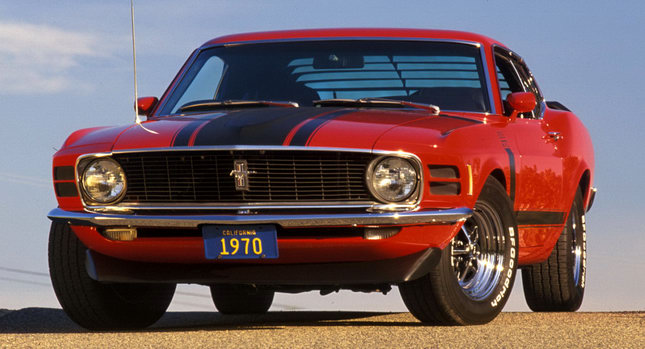“I like old Mustangs, but new ones do tend to show them who’s boss.” That’s how a Consumer Reports article ends on a piece comparing the 2011 Ford Mustang V6 against the 1970 Mustang Boss 302, and I’m not quite sure if it really makes any sense.
Being boss means you put your contemporaries (not geezers) to shame. That’s like saying, “Man, I just wiped the court with that WWII veteran. Look at me now!” Of course, all this comes about because of Consumer Reports’ number chart comparing the 1970 Boss 302 and the modern-day V6 (see below).
While Señor Jim Travers makes the conventionally wise point that technology “has marched on”, I wouldn’t go so far as to say that the new V6s show the old Boss Mustangs “who’s boss” (or anything else, for that matter).
Sure, the numbers are better for the most part, along with just about everything else (materials, comfort, value, etc.), but that’s not really the point, is it? The Boss WAS the Boss, and should not have to be the Boss today. It could be just me, but I don’t think anyone in their right mind cross-shops these two cars.
 Another thing: just because it has similar or better numbers does not make the new V6 Mustang (as good as it is) a muscle car. Why? For the same reasons that so many people love it: it’s an efficient, well put-together, high-output V6-powered, sporty coupe that can take corners without killing you and the wifey.
Another thing: just because it has similar or better numbers does not make the new V6 Mustang (as good as it is) a muscle car. Why? For the same reasons that so many people love it: it’s an efficient, well put-together, high-output V6-powered, sporty coupe that can take corners without killing you and the wifey.
Muscle cars are loud, old, V8-packing pollution machines that get single-digit fuel economy figures when pushed on the highway and mostly do the straight line part of a trip. That’s it, that’s all, we’re done.
Yes, the V6 Mustang is a better car in general, but is it really an “eye opener” to see that figures have gotten better over time? Nope.
By Phil Alex
Source: Consumerreports
Photo Gallery: 1970 Ford Mustang Boss 302
__________________________________________________________________
Photo Gallery: 2011 Ford Mustang V6




































